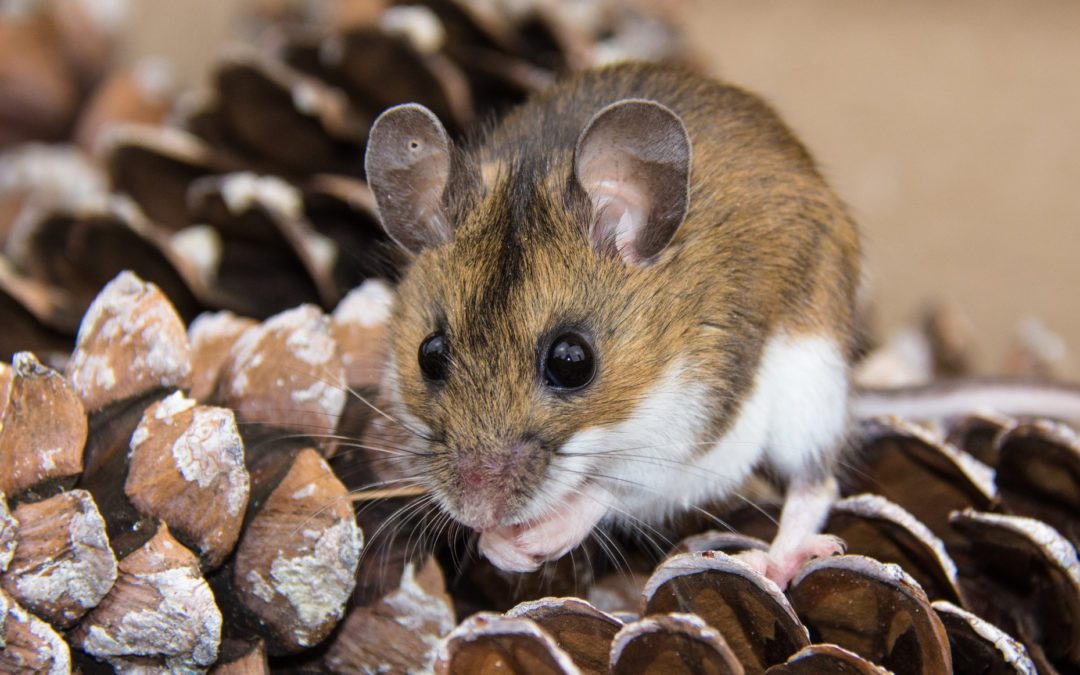When one thinks of mice, it may evoke the cartoonish image of someone standing on chair with a broom, terrified of this tiny, furry animal. It’s exceedingly unlikely that a single mouse is going to attack or cause any bodily injury, so why is it the instinct of so many people to run and scream when they see one? Though it may seem silly, there could be something to this impulse. One mouse can be something frightening, indeed, because if you see one mouse, there are more. And the more there are, the more potential there is for damage and disease.
Mice are small and plentiful, and they are the perfect prey for many predators. Coyotes, foxes, cats, snakes, and predatory birds all hunt mice as a part of their diet. There are even some species of spider that eat them. Because they are such an easy target, mice are incredibly cautious and secluded creatures. They gather and live in confined sheltered spaces where it’s difficult to find them. In the wild, this usually translates to an underground burrow, and inside homes, it is typically between walls or in an attic space. Mice scavenge for food at night when they are less likely to be spotted, and when they do come out from their hiding places, they seldom venture more than 15 feet and tend to stick close to walls and baseboards as they travel. It is for these reasons that mice are rarely seen by the people in whose homes they’re living. A family may not even know they have a mouse infestation until they notice things like droppings in the kitchen or gnawing on boxes of food, wooden furnishing, and wires.
their diet. There are even some species of spider that eat them. Because they are such an easy target, mice are incredibly cautious and secluded creatures. They gather and live in confined sheltered spaces where it’s difficult to find them. In the wild, this usually translates to an underground burrow, and inside homes, it is typically between walls or in an attic space. Mice scavenge for food at night when they are less likely to be spotted, and when they do come out from their hiding places, they seldom venture more than 15 feet and tend to stick close to walls and baseboards as they travel. It is for these reasons that mice are rarely seen by the people in whose homes they’re living. A family may not even know they have a mouse infestation until they notice things like droppings in the kitchen or gnawing on boxes of food, wooden furnishing, and wires.
If you see an actual mouse in your home, there are very likely many many more where it came from. This is especially true if it is during the daytime and/or in an open area like the middle of the floor. When populations grow large within a single community of mice, it forces some members out of the burrow at odd times. Because the smaller, weaker mice are less well-equipped overall, it leads them to take bigger risks, scavenging during the day so there are fewer competitors for prime food sources.
Mice are also able to multiply at an alarming rate. A female mouse can give birth to up to 10 litters in a year consisting of five or six young. That is 60 offspring from just one female. Those young are born after approximately three weeks and are able to produce offspring of their own at about two months.
As you can see, it is very easy for a small mouse presence to turn into a huge complication in a short amount of time. This is why it’s so important to deal with a mouse infestation as soon as you know it’s there. Mice can cause a great deal of damage both to your property and to your health. If you notice chewing or droppings, hear scurrying in the walls and ceiling, and especially if you see a mouse, do not wait to contact a certified wildlife control company. A licensed animal removal expert will know the quickest and most efficient way to eliminate the mice in your home and will return to your property several times to ensure the population is dwindling and then gone. They will also offer animal-proofing solutions to keep mice from getting inside your home in the future as well as suggestions for making your home a less appealing destination for pests. If you know there’s a problem, nip it in the bud as quickly as possible. Call a professional today.


